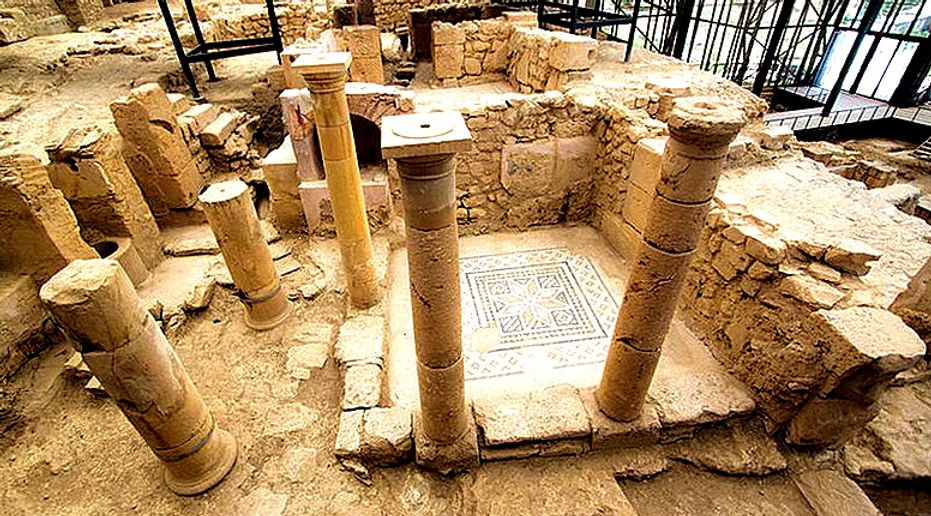


ZEUGMA
Category: Anatolian Civilisations
Civilisation: Kommagene / Roman
ZEUGMA THE SUNKEN CITY / GAZIANTEP
ARCHAEOLOGICAL SITE & MUSEUM
The Ancient City of Zeugma was established in 300 BC on an area of approximately 20 thousand acres within the borders of Belkis Bay of Nizip district of Gaziantep. It has maintained its importance throughout history because it is at the shallowest point of the Euphrates River and is located in a strategic region in military and commercial terms. The ancient term Zeugma actually referred to the twin cities on the opposing banks of the river. On the other side, Apamea or Apameia was a Hellenistic city on the left (the eastern) bank of the Euphrates, opposite the famous city of Zeugma, at the end of a bridge of boats connecting the two, founded by Seleucus I Nicator.

Click on the pic. to zoom in
The ancient term Zeugma actually referred to the twin cities on the opposing banks of the river. Today the name Zeugma is usually understood to refer to the settlement on the west bank, called Seleucia after the founder, while the one on the East bank was called Apamea after his Persian wife Apama.
When Seleukos Nikator, one of the generals of Alexander the Great and later the King of Syria, first founded the city in 300 BC, he named it Seleukos Euphrates (Silifke of the Euphrates). After the Roman Empire annexed it in the 1st century, its name was changed to "ZEUGMA", which means "bridge" / "gate" and is still known by the same name today. In the 7th century, the city was abandoned as a result of the Islamic raids and in the 16th century, Belkis Bay was established with its current name.

Click on the pic. to zoom in
Initially the site was excavated sporadically, but in 2000, the site would be flooded due to construction of the Birecik Damm. With only a fraction of the site excavated, archeologists feared that many mosaics would be permanently lost if no prefautions would urgently be taken. After reading about the situation of the ancient site in The New York Times, and with only few months left, American philanthropist David W. Packard donated USD 5 million to fund an emergency excavation of the archeological site, allowing archeologists to preserve the mosaics that would otherwise be inundated by the damm.
The mosaics that were excavated were initially stored at the Gaziantep Museum, and are nowadays displayed at the Zeugma Mosaic Museum.






